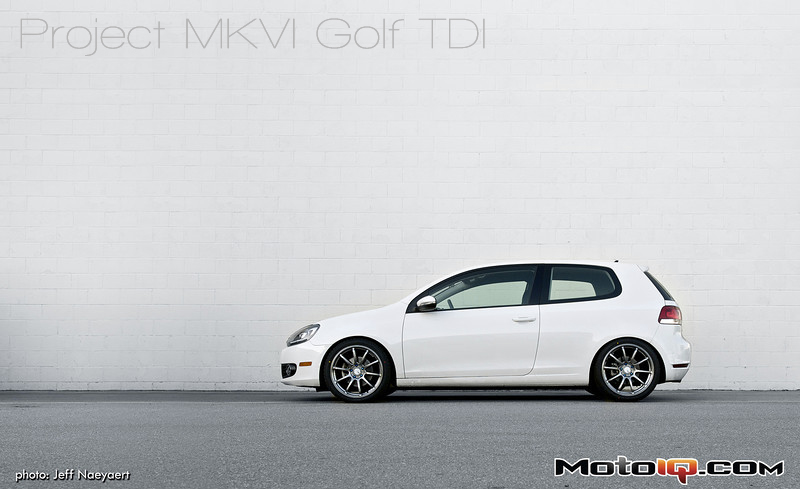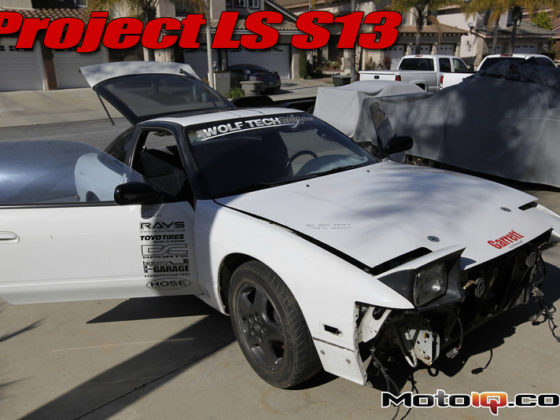,
 |
| Installed and ready to go. |
 |
| As close to flossing as you'll see Howard as he checks tire pressure. Stylish ear protection! |
So, how did it all do on our Golf? The first thing we noticed was how smooth the ride was with the KW Variant IIIs. Out of the box, the Variant IIIs performed nearly perfectly for any type of driving you're likely to do on the street without being a serious threat to other members of society, and offered very few compromises in ride. For track driving, where ride quality is not a concern, we will turn both compression and rebound up a bit for more body control. The wheel and tire combination complemented the Variant IIIs perfectly. Road noise is barely louder than stock (likely a result of the lower profile), wet handling and hydroplaning resistance is improved, and road holding is an order of magnitude better than the stock combination. The absolute limit is easy to explore as well, with improved steering feel and turn-in. Again, nearly any type of semi-responsible street driving can be performed with absolute impunity. Now we understand why Toyota equipped the FR-S with such tame rubber out of the box: onramps and mountain roads are almost boring without achieving ludicrous speed.

All that performance is nice, but our MKVI Golf TDI is a double-edged sword and must perform as daily driver and commuter car, making ho-hum topics like fuel economy important. Luckily, after a freak cold snap (well, for SoCal, it was in the 20s!) passed, our mileage average returned to their normal average. Likely the short driving distances and resulting cold engine had a lot to do with our 33.5mpg average on the first tank. The average has returned to the normal 38mpg range since.

Not enough rambling about Rudolph's sparkless wonders? Check out the rest of our diesel fleet: Project Hypermiler and Project Sipster.
 |  |
| Project Hypermiler | Project Sipster |
Sources:



